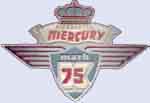You kind of find a first for everything! Another enthusiast doing a racing Anzani restoration asked me if I have any spare Anzani rope plates that came of cast aluminum. I looked expecting to find something with the marque but came up with one that has nothing on it and in a way looks like the top off an older Konig rope plate but clearly this one fit Anzani flywheels to a "T"! Does anyone have any idea how much older this style of rope plate is? So far the Mark 1 and Mark 2 Anzanis I seen have embossed in the casting British Anzani marqued rope plate. Maybe off another model?? A picture will follow shortly to help with a possible more accurate ID.


 Thanks:
Thanks:  Likes:
Likes: 







Bookmarks